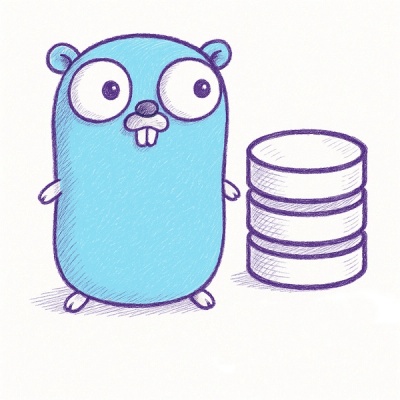
Security News
Browserslist-rs Gets Major Refactor, Cutting Binary Size by Over 1MB
Browserslist-rs now uses static data to reduce binary size by over 1MB, improving memory use and performance for Rust-based frontend tools.
hops-lambda
Advanced tools
Hops Lambda allows you to quickly deploy your hops application to AWS Lambda.
This is the minimal configuration required to get started with hops-lambda:
package.json
--- a/package.json
+++ b/package.json
"hops": {
+ "assetPath": "prod",
+ "basePath": "prod",
"browsers": "last 1 Chrome versions",
+ "node": "6.10.3"
},
"dependencies": {
"hops-express": "^9.0.0",
+ "hops-lambda": "^9.0.0",
"hops-react": "^9.0.0",
"hops-redux": "^9.0.0",
And then you need to provide your AWS credentials and region config (for example by exporting them in your terminal):
export AWS_ACCESS_KEY_ID=key
export AWS_SECRET_ACCESS_KEY=geheim
export AWS_REGION=eu-central-1
After that you can deploy by executing:
hops lambda deploy
In your terminal.
In order to use hops-lambda, you need to add it to your project dependencies.
npm install --save hops-lambda
or
yarn add hops-lambda
Also note, that hops-lambda has a peer dependency to hops-express which needs to be installed in your project too.
In order to use hops-lambda you need to define the Node.js target version for which babel should transpile your code. Because the most recent Node.js version on AWS Lambda is v6.10.3 you need to set your node target in hops-config to 6.10.3.
{
"hops": {
"node": "6.10.3"
}
}
The following options are supported in a hops-config _aws object.
{
"name": "foo",
"version": "1.0.0",
"hops": {
"_aws": {
...
}
}
}
| Field | Type | Description |
|---|---|---|
region* | String | The AWS Region in which the resources should be created. Defaults to us-east-1 |
uniqueName | String | A unique name, used as CloudFormation stack name and S3 bucket name. Defaults to hops-lambda-${packageJson.name} |
memorySize | Number | The memory allocated to your Lambda function. Defaults to 128. Valid values: (128 - 1536) |
stageName | String | The name of your API Gateway stage. Defaults to prod |
domainName | String | A custom domain name. Defaults to '' |
certificateArn | String | If you use a custom domain you need to specify the ARN of a SSL certificate in ACM. Defaults to '' |
cloudformationTemplateFile | String | Path to a custom CloudFormation template. Defaults to node_modules/hops-lambda/cloudformation.yaml |
AWS_REGION and AWS_DEFAULT_REGION in your environment first, before defaulting to us-east-1.If you use hops-lambda without a custom domain, you need to set your hops-config basePath and assetPath to the same value as your stageName (see above).
After you have configured your package.json (as described above), you also need to configure your AWS credentials.
To set-up your credentials in a ~/.aws/credentials file, please follow this article.
To set-up your credentials via environment variables, you can define the following variables:
AWS_ACCESS_KEY_IDAWS_SECRET_ACCESS_KEYAWS_SESSION_TOKEN (optional, only required for MFA)Hops Lambda allows you to quickly deploy (and remove) your hops applications on AWS Lambda.
The hops-lambda package, when installed, adds a new hops lambda command, which contains two sub-commands:
hops lambda deployhops lambda destroy [--yes] [--keep-files] [--keep-bucket]You can use the integrated help in the CLI to get more information on the available options.
To quickly deploy a Hops application to AWS Lambda you need to have your AWS credentials set up (see AWS Configuration above). And you also need to have basePath and assetPath set to prod (or your configured stageName, if you have a differently named stage).
Then execute:
hops lambda deploy
To update your application, simply do your code changes and execute hops lambda deploy again and it will only update the parts that have changed since your last deployment.
If you want your application to be available on a custom domain, you need to have your AWS credentials set up (see AWS Configuration above). And you also need to configure domainName and certificateArn. Optionally you can set a custom basePath and assetPath if you want your application to be available on a different path.
In order to use a custom domain name for your Hops application, you need to create or import an SSL certificate in the AWS Certificate Manager.
Check out the documentation of ACM, especially the sections about importing or requesting a certificate.
Important: Even if you deploy your application in a different region, you need to import or request the certificate in the region us-east-1 (see the section about CloudFront and ACM here).
Once you have imported or requested a certificate in ACM, you need to configure its ARN and your custom domain name in your package.json config (see the config section above).
Then, after you execute hops lambda deploy you will get an output with a CloudFront distribution address, which you need to configure with your DNS provider as an A-record or CNAME. Read more about it here.
At the moment it is not possible to do a multi-stage deployment with a single CloudFormation stack.
If you want to do it however, you need to create multiple stacks, for example by changing the package.jsons name field or the AWS configs uniqueName value and then execute hops lambda deploy again.
In case you need additional resources in your CloudFormation template, you can specify the cloudformationTemplateFile value in your AWS config to overwrite the built-in CloudFormation template.
It will get executed with the default parameter values, but you can overwrite these or specify additional parameters by using the deploy(options, parametersOverrides) API (see next section).
The hops-lambda package exports two methods: deploy() and destroy():
deploy(options, parametersOverrides)deploy(options, parametersOverrides) can be called programmatically to deploy an Hops application to AWS Lambda.
It accepts two arguments options and parametersOverrides - right now options is unused, but reserved for future options coming through CLI arguments.
parametersOverrides is an object, where the key is the name of the Parameters defined in the CloudFormation template and the value is its corresponding value. These get merged with the default parameters and can be used to overwrite specific parameters or implement new ones in case you overwrite the entire CloudFormation template (see Advanced configuration above).
The deploy() method returns a Promise-chain that returns the Outputs of the CloudFormation stack and could be used to schedule further work, if needed.
destroy(options)destroy(options) can be called programmatically to delete the CloudFormation stack and the associated S3 bucket that has been created by deploy().
Its options argument is an object with the parsed CLI parameters (currently keepBucket: boolean, keepFiles: boolean and yes: boolean. All of them default to false).
It returns a Promise-chain that can be used to schedule further work after successfully deleting the stack and/or S3 buckets.
FAQs
Quick and easy deployment of Hops applications to AWS Lambda
The npm package hops-lambda receives a total of 397 weekly downloads. As such, hops-lambda popularity was classified as not popular.
We found that hops-lambda demonstrated a not healthy version release cadence and project activity because the last version was released a year ago. It has 8 open source maintainers collaborating on the project.
Did you know?

Socket for GitHub automatically highlights issues in each pull request and monitors the health of all your open source dependencies. Discover the contents of your packages and block harmful activity before you install or update your dependencies.

Security News
Browserslist-rs now uses static data to reduce binary size by over 1MB, improving memory use and performance for Rust-based frontend tools.

Research
Security News
Eight new malicious Firefox extensions impersonate games, steal OAuth tokens, hijack sessions, and exploit browser permissions to spy on users.

Security News
The official Go SDK for the Model Context Protocol is in development, with a stable, production-ready release expected by August 2025.